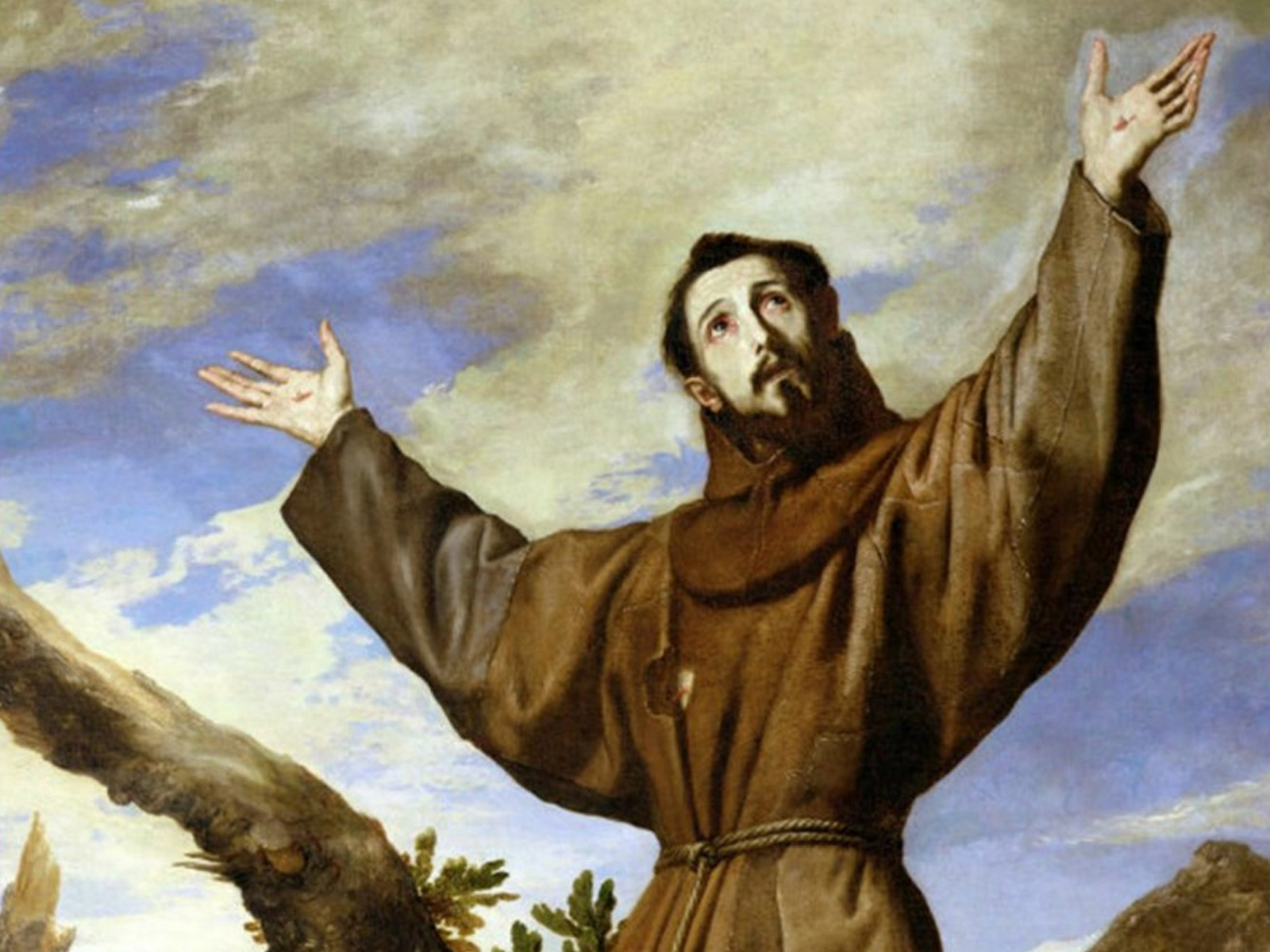Saint Francis of Assisi stands as one of the most beloved and influential saints in Catholic history, a man whose radical conversion from worldly wealth to spiritual poverty continues to inspire millions of Catholics worldwide 1. His life story offers profound lessons about surrendering to God’s will, caring for creation, and finding joy in simplicity 2. Born in the prosperous Italian town of Assisi in 1181, Francis would become the founder of the Franciscan order and a model of Christian discipleship that remains relevant for today’s faithful 3.
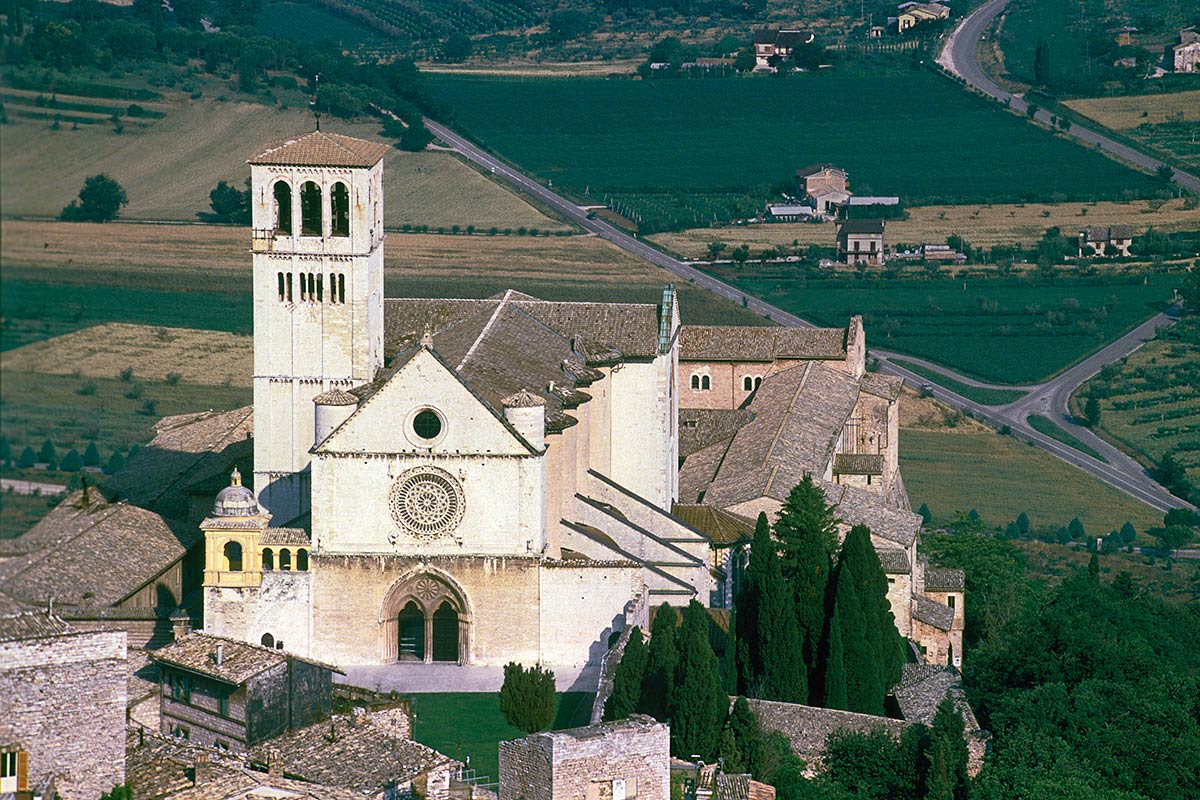
The Basilica of Saint Francis in Assisi, Italy, an iconic landmark dedicated to Saint Francis sacredsites
Historical Context and Early Life
Francis was born Giovanni di Pietro di Bernardone around 1181 in Assisi, Italy, during a time of great social and economic change in medieval Europe 2. His father, Pietro di Bernardone, was a wealthy cloth merchant who had built a successful business trading with France, while his mother Pica was believed to be of French nobility 3. The family’s prosperity allowed young Francis to enjoy all the privileges of medieval upper-class life, including fine clothes, elaborate feasts, and the finest education available 4.
During his youth, Francis was known for his charm, generosity, and love of French culture and poetry 2. He learned to read and write Latin at the school near the church of San Giorgio and developed a particular fondness for the troubadour culture of Provence 1. His father’s frequent business trips to France influenced Francis’s upbringing, even leading to his name change from Giovanni to Francesco in honor of his father’s commercial success in France 4.
The young Francis lived without serious moral lapses but was certainly worldly in his pursuits 2. He was recognized as a leader among the young men of Assisi, known for his exuberant love of life and his generous spirit when it came to entertaining friends 3. His father expected him to follow in the family textile business, but Francis showed little interest in the mundane aspects of commerce 4.
The Radical Conversion
Francis’s dramatic conversion began around 1202 when he participated in a war between Assisi and the nearby city of Perugia 2. During this conflict, he was captured and held prisoner for nearly a year before his father paid the ransom for his release 3. This experience of imprisonment and the serious illness that followed marked the beginning of his spiritual transformation 4.
After his recovery, Francis initially planned to join the papal forces under Count Gentile, but a vision or dream instructed him to return to Assisi and await a different kind of calling 1. This marked the beginning of a series of mystical experiences that would reshape his understanding of God’s will for his life 2.
The pivotal moment came when Francis was praying in the small, dilapidated church of San Damiano 3. There, he heard Christ speak to him from the crucifix, saying “Francis, go and repair my house, which as you see is falling into ruin” 4. Initially interpreting this literally, Francis began selling his father’s cloth to raise money for church repairs, an act that would lead to the dramatic confrontation with his father 2.
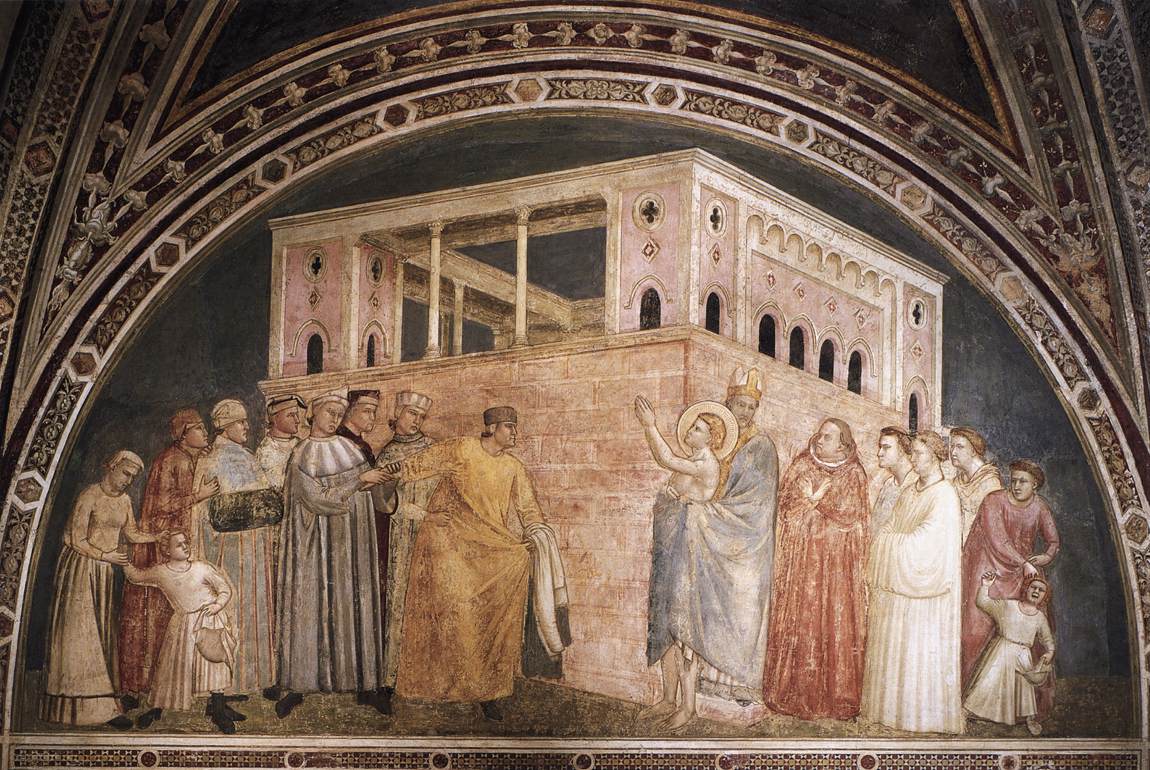
Saint Francis renounces his worldly goods, a pivotal moment in his spiritual journey, depicted in a medieval fresco artchive
The public renunciation of his inheritance before the Bishop of Assisi became one of the most famous scenes in hagiography 3. Francis stripped himself naked, returning even his clothes to his father, and declared that from that moment forward, he would call only God his Father 1. This radical act of poverty and trust in divine providence marked his complete break from worldly concerns and his embrace of a new life 4.
Key Teachings and Spiritual Journey
Francis’s spiritual teachings centered on three fundamental principles: radical poverty, perfect joy, and love for all creation 2. His understanding of poverty went beyond mere material deprivation; it represented a complete detachment from worldly concerns and a total dependence on God’s providence 3. He taught his followers that by embracing “Lady Poverty,” they could achieve perfect freedom and union with Christ 1.
The saint’s relationship with creation became one of his most distinctive characteristics 4. Francis saw all creatures as his brothers and sisters, famously preaching to birds and even attempting to convert a wolf in Gubbio 2. His “Canticle of the Creatures,” composed near the end of his life, remains one of the most beautiful expressions of Christian ecology ever written 3.
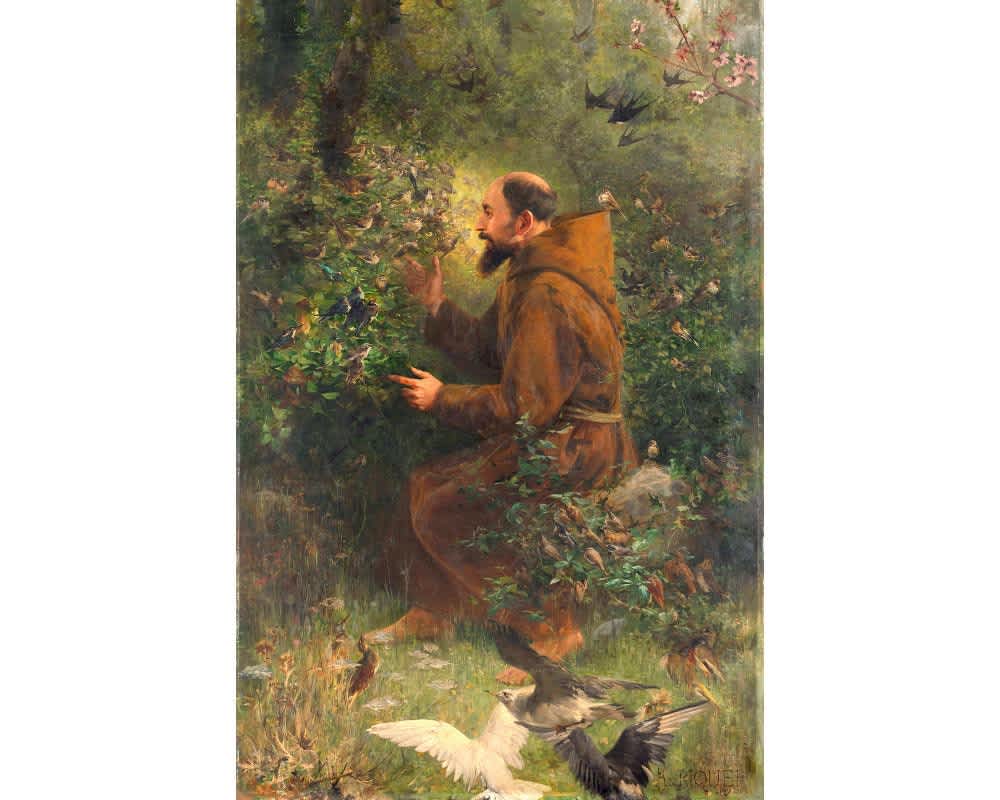
Saint Francis of Assisi depicted in a lush natural setting, surrounded by various birds etsy
Francis emphasized the importance of living the Gospel literally, without compromise or interpretation 1. His rule for the Franciscan order was remarkably simple: “To follow the teachings of our Lord Jesus Christ and to walk in his footsteps” 4. This radical commitment to Gospel values attracted followers from across Europe and led to the rapid growth of the Franciscan movement 2.
The saint’s devotion to the humanity of Christ was particularly profound 3. He was instrumental in popularizing devotion to the Nativity, creating the first Christmas crèche in Greccio in 1223 1. This innovation helped make the mystery of the Incarnation more accessible to ordinary believers and remains a beloved Christmas tradition today 4.
The Miracle of the Stigmata
Two years before his death, while praying at the hermitage of La Verna in September 1224, Francis experienced the most extraordinary mystical event of his life 5. On the feast of the Exaltation of the Cross, he received the stigmata – the five wounds of Christ – becoming the first person in recorded history to bear these sacred marks 6.
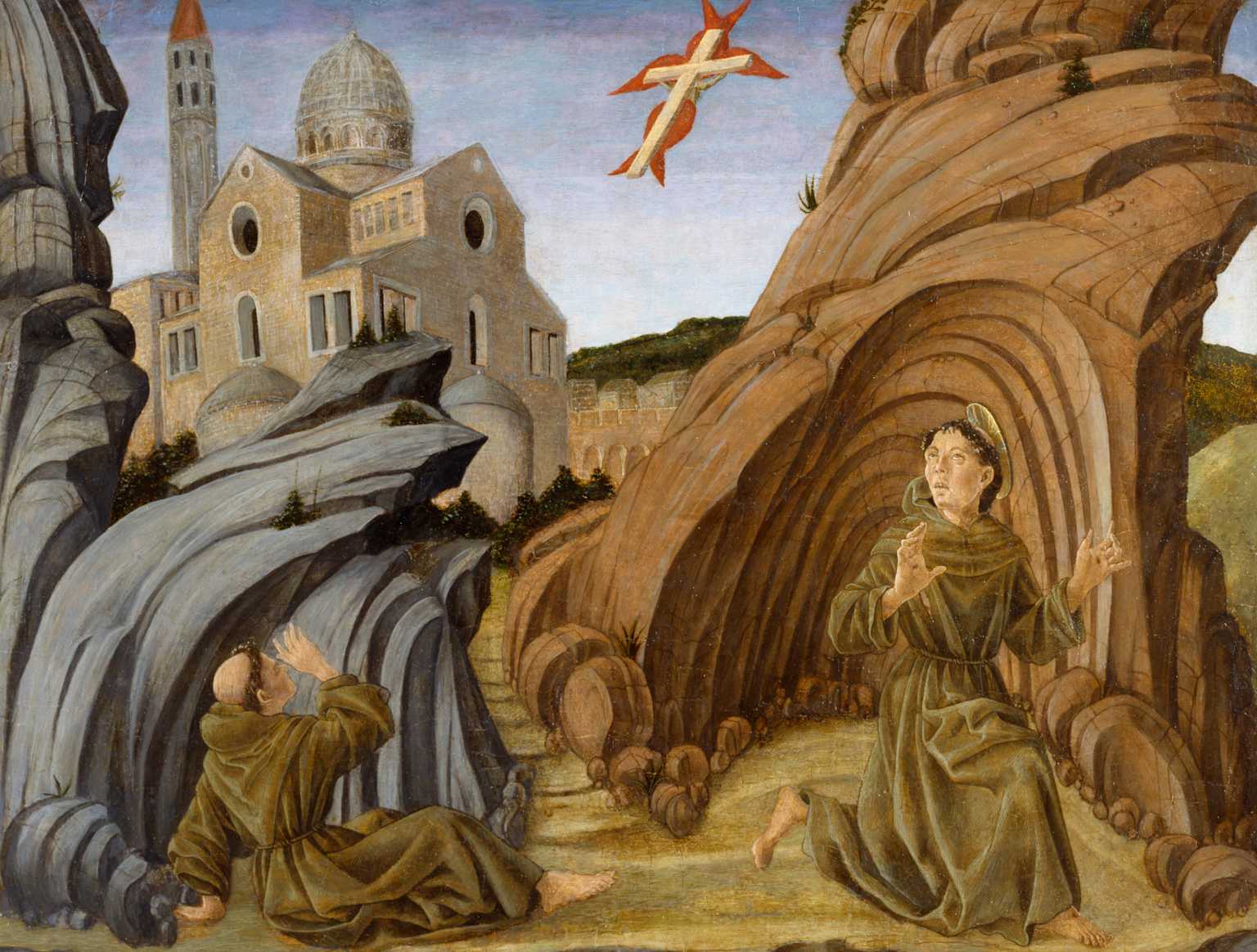
Saint Francis of Assisi receives the stigmata from a winged crucifix in this medieval artwork thewalters
According to the account by Brother Thomas of Celano, Francis saw a vision of a seraph with six wings, standing above him with hands outstretched and feet joined together, fixed to a cross 7. After the vision disappeared, Francis found that his hands, feet, and side bore the actual wounds of Christ’s crucifixion 5. Brother Elias, the minister general of the Franciscan order, announced this miracle to all the friars in a circular letter following Francis’s death 6.
Francis took great care to hide the stigmata during his remaining two years of life, understanding that these marks were a sign of his complete conformity to Christ 7. The wounds caused him considerable pain but also filled him with immense spiritual joy, representing the culmination of his desire to be perfectly united with the suffering Christ 5.
Legacy and Impact
Saint Francis’s influence on the Catholic Church and Western civilization cannot be overstated 1. He founded not only the Order of Friars Minor (Franciscans) but also, with Saint Clare, the Order of Poor Ladies (Poor Clares), and the Third Order for lay people seeking to live Franciscan spirituality in the world 3. These orders continue to serve the Church today with tens of thousands of members worldwide 4.
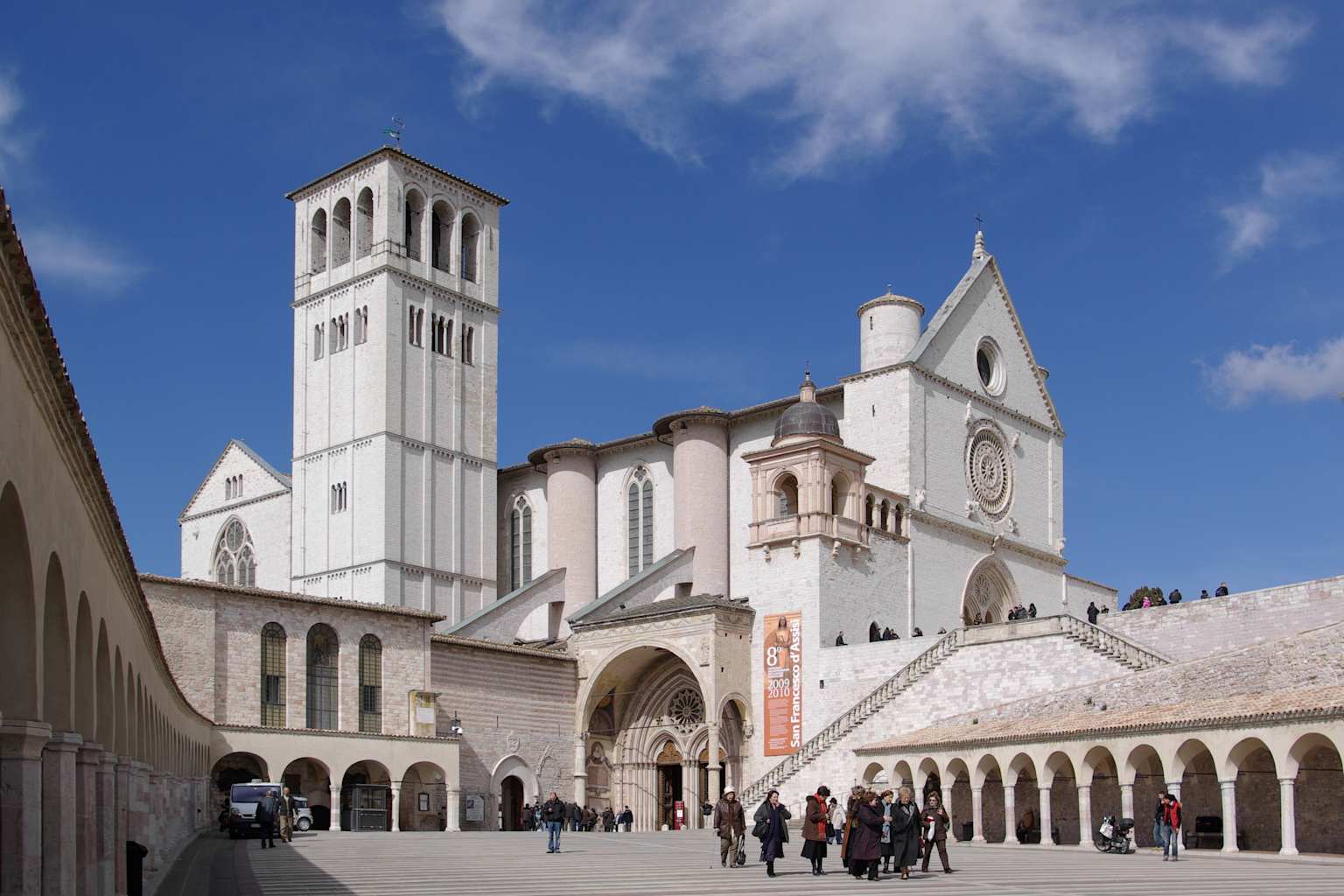
The Basilica of Saint Francis of Assisi, a prominent pilgrimage site in Italy wikipedia
The Basilica of Saint Francis in Assisi, built shortly after his canonization in 1228, became one of the most important pilgrimage sites in Europe 2. The magnificent frescoes by Giotto and other masters that adorn the basilica walls helped establish Francis as a central figure in Christian art and spirituality 3.
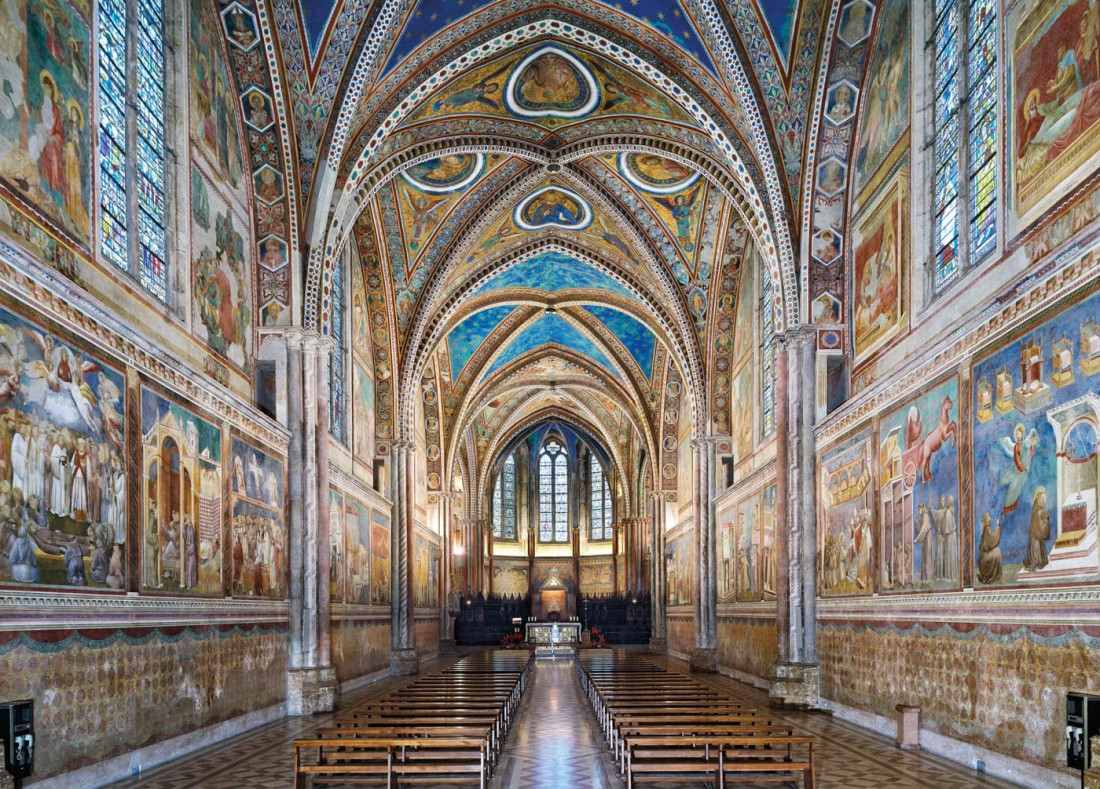
Interior view of the Basilica of Saint Francis of Assisi, featuring its intricate frescoes and vaulted ceilings umbriaconme
In 1979, Pope John Paul II declared Saint Francis the patron saint of ecology, recognizing his profound understanding of humanity’s relationship with creation 8. This designation has taken on new significance in our current environmental crisis, as Pope Francis’s encyclical “Laudato Si'” draws heavily on the saint’s vision of integral ecology 9.
Practical Lessons for Today’s Catholics
Saint Francis offers contemporary Catholics several practical lessons for deepening their faith 2. First, his radical trust in God’s providence challenges us to examine our own attachments to material possessions and social status 3. While few are called to Francis’s extreme poverty, all Christians can benefit from simplifying their lives and focusing on spiritual rather than material wealth 4.
The saint’s joy in the midst of suffering provides a powerful model for facing life’s challenges 1. Francis found perfect joy not in worldly success but in being able to suffer for Christ’s sake 2. This perspective can help modern Catholics maintain hope and purpose during difficult times 3.
Francis’s love for creation offers a timely message about environmental stewardship 8. His recognition of all creatures as brothers and sisters calls Catholics to care for the natural world as a sacred trust from God 9. In an age of climate change and environmental degradation, Francis’s ecological spirituality provides both inspiration and practical guidance 2.
The saint’s emphasis on living the Gospel literally, without compromise, challenges contemporary Catholics to examine whether their faith truly transforms their daily lives 3. Francis’s complete surrender to God’s will serves as a model for authentic Christian discipleship 4.
Finally, Francis’s devotion to the Church, even when its human leaders were flawed, offers guidance for Catholics struggling with institutional problems 1. He chose reform through example rather than rebellion, showing how faithful Catholics can work for renewal while maintaining unity 2.
Conclusion
Saint Francis of Assisi remains one of the most compelling and relevant saints for Catholics seeking to deepen their faith in the modern world 3. His radical conversion from worldly wealth to spiritual poverty, his mystical experiences including the stigmata, and his profound love for all creation continue to inspire believers across denominational lines 1. The practical lessons of his life – embracing simplicity, trusting in divine providence, caring for creation, and living the Gospel authentically – speak directly to the challenges facing contemporary Catholics 2.
As we face an uncertain future marked by environmental crisis, social inequality, and spiritual confusion, Saint Francis offers a clear path forward: radical dependence on God, sacrificial love for others, and joyful acceptance of whatever suffering God permits 4. His example reminds us that true happiness comes not from accumulating possessions or achieving worldly success, but from surrendering completely to God’s will and finding our identity in Christ alone 3.
Connect with Us!
Explore more Catholic content and support our mission:

